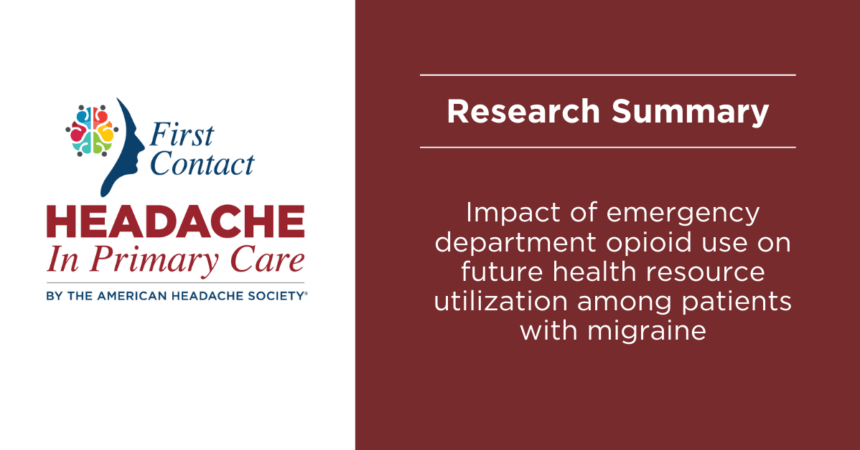
Research Summary: Emergency Department Opioid Use
Headache®: The Journal of Head and Face Pain recently published Impact of emergency department opioid use on future health resource utilization among patients with migraine.
This study reviewed the impact of emergency department opioid use on future health resource utilization among patients with migraine.
Study Overview
- Migraine is a common primary headache disorder affecting approximately 15% of the U.S. population, and is one of the most burdensome diseases in the world, leading to high resource utilization and costs
- Migraine can progress from infrequent/episodic (less than 15 headache days per month) to chronic (15 or more headache days per month for at least 3 months), which can be influenced by multiple environmental and genetic factors
- Medication overuse, especially with opioids, was found to be an important and modifiable risk factor for migraine progression
- Several previous studies have shown that patients with migraine receiving opioids had higher headache-related resource use, including emergency department/urgent care, primary care, and specialty care visits compared to opioid non-users
- This retrospective cohort study evaluated future health resource utilization (HRU) between patients with migraine who received opioid medications at their emergency department (ED) visits versus patients with migraine who did not receive opioids at their ED visits
Study Results
- Seven hundred and eighty-eight (788) patients were included in this study, of whom 283 (35.9%) patients received one or more opioid medications during their index ED visits (“opioid recipients”), 274 (34.8%) patients were “opioid naïve” at baseline, and 62 (22.6%) of these 274 opioid naïve patients received opioid medications at their index ED visits (“naïve opioid recipients”)
- During the 6-month follow-up period, opioid recipients had significantly more all-cause (p <0.0001) and migraine-related (p <0.0001) opioid prescriptions, more all-cause (p = 0.002) and migraine-related (p = 0.001) ED visits, and a higher risk of future migraine-related ED visits (p = 0.013), controlling for covariates
- Patients who were baseline opioid naïve but received opioids during their index ED visits were more likely to have future migraine-related ED visits compared to those who were baseline opioid naïve and did not receive any opioids during their index ED visits (p = 0.001), controlling for covariates
Implications for Primary Care Clinicians
- This study has shown that patients with migraine who were given opioids during ED visits were more likely to return to the ED in the subsequent 6 months compared to patients who were not given opioids, which highlights the impact of opioid use on future health resource utilization
- It is important to recognize the impact of prescribing opioids, and the need for optimizing migraine management in the ED setting, including limiting the use of opioids
- It may be helpful to discuss with patients the impact that opioid use has on migraine so they may be able to better understand and participate in shared treatment decision making in the ED
This summary is part of the First Contact — Headache in Primary Care initiative, an American Headache Society program that provides educational resources to empower healthcare professionals and improve headache and migraine care. We encourage providers in all stages of their careers to visit our homepage to access educational tools to improve patient care.


